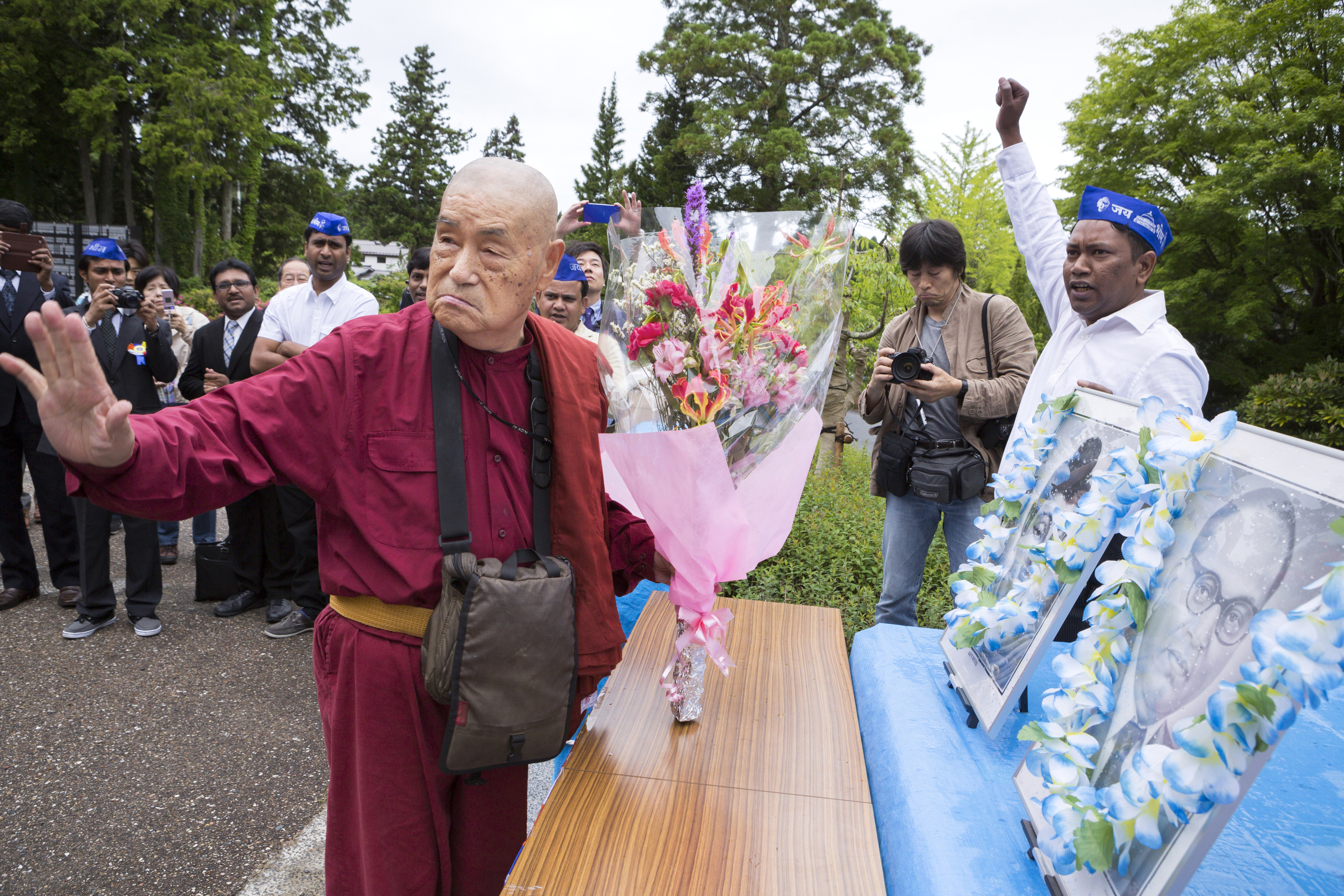The room goes silent, and when I look up from my recording equipment, an otherworldly figure has entered the room. Its eyes sit deep in their sockets underneath a wrinkled forehead. A strong jaw completes the image of a figure imbued with an iron will. Its clean-shaven head drops in a bow, its thin, stone-like lips open and an old man's coarse voice emerges from somewhere deep inside: "Konnichi wa."
The man standing in front of me, holding a staff and wearing a simple robe, is Surai Sasai, a Japanese Buddhist monk on a lifelong quest for justice in India. In a few moments he will address a large audience about his mission in the South Asian nation, where he has spent most of his adult life. I hear the murmur from the audience waiting in the adjacent lecture hall. The meeting, on a fine June day, is hosted by the famous Shingon sect of esoteric Buddhism, at the sect's headquarters on Mount Koya in Wakayama Prefecture. Sasai sits down, and I feel a pang of insecurity. Can I ask a man like this anything, without the risk of offending him?
"He's got the kind of face I'd never seen before," says Mitabi Kobayashi, 43, in an interview some days later. Kobayashi is a filmmaker who has been following Sasai for the past 10 years. "I first saw it in a magazine in 1997," he continues. "Thinking it must be a photograph from sometime just before the war, maybe a little later, I was stunned when I learned the picture was only 8 years old. When I learned later about his life's mission, I knew I had to do a documentary on him."
















With your current subscription plan you can comment on stories. However, before writing your first comment, please create a display name in the Profile section of your subscriber account page.